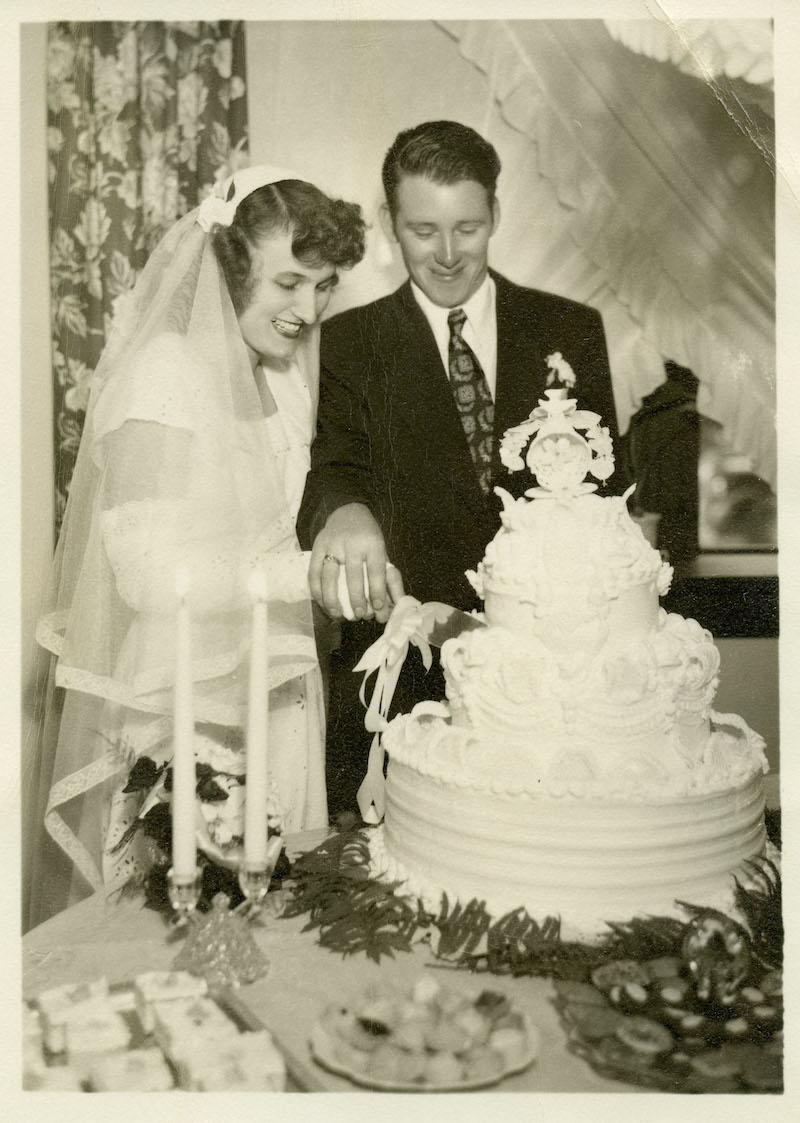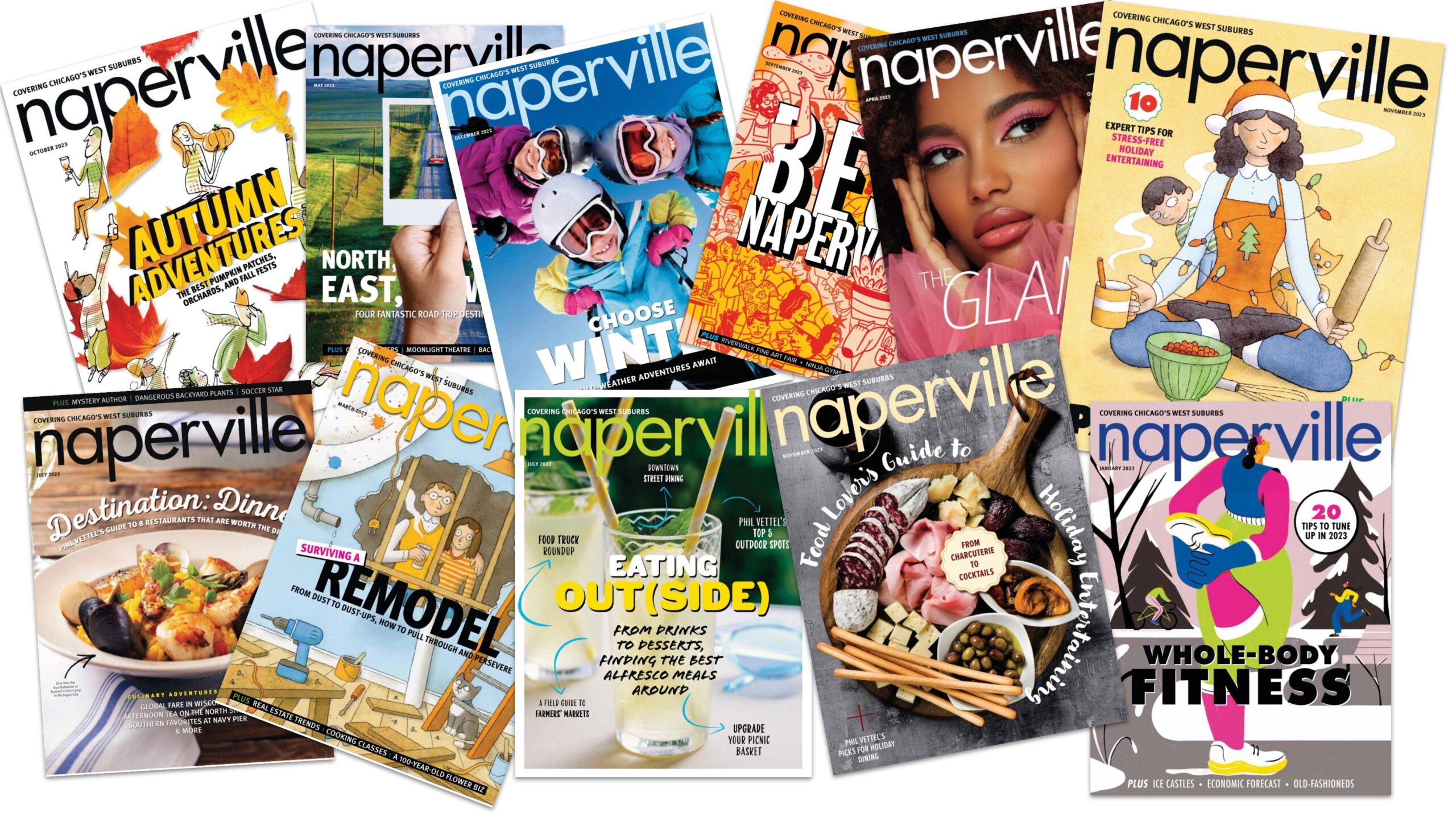The Evolution of the Modern Wedding
By Julie Duffin
April 2018 View more Featured

Over the centuries, weddings have evolved from simple, small affairs into large, glamorous events. What was once an intimate ceremony has become a sizable celebration, demanding months of planning and a small fortune.
To learn more about the influences that shaped the progression of local matrimonial ceremonies, we recently sat down with Naper Settlement Curator of Exhibits and Interpretation Jennifer Bridge.
In the early 19th century, weddings generally were small private events held in the home of the bride or groom’s parents, Bridge says. A formal announcement of the marriage was made in church the following Sunday. Because they were held in homes, weddings could only accommodate a few guests. Often it was only the bride, groom and a few family members as witnesses. Refreshments were typically served afterward, but few families hosted an elaborate meal. “It was just another milestone in life,” says Bridge, “not the big celebration we think of today.”
The bride’s dress also reflected the practical nature of the 19th century. Contrary to popular belief, a white wedding dress did not originate as a symbol of purity, but rather one of wealth. In the 1800s, white fabrics were expensive and difficult to clean; they were considered a luxury only the wealthy could afford.
Most brides wore what they considered to be their best dress, regardless of the color. If someone did have a dress made for the wedding, she likely altered or dyed it later and used it as her new best dress. Women wore their wedding dresses over and over again. Even for the wealthy, the idea of wearing a wedding dress only one time was absurd. Veils also served a practical purpose by keeping the dust out of a woman’s face.
While some wealthy brides did wear white prior to the mid 1800s, most sources credit Queen Victoria for having inspired the tradition. Wanting to support and stimulate her country’s struggling lace industry when she married Prince Albert in 1840, she showcased a large piece of handmade lace over her white satin gown. Advances in photography and printing in the mid-1800s enabled people to see images of the royal wedding and brides everywhere wanted to emulate the queen’s look.

Toward the mid-1800s, more couples were getting married in a church. The added space allowed more guests to attend, and therefore required a more elaborate event. As the middle class grew and acquired wealth, wedding spending increased. Cakes and floral arrangements, which used to be created at home, were now purchased from bakers and florists. More brides purchased ready-made wedding dresses and couples began to have formal wedding portraits taken.
“It was a very special occasion to have your photograph taken,” Bridge says. Similar to painted portraits, people posed with serious expressions on their faces. “They knew that particular photograph may be the only lasting image of them and they wanted it to reflect them as an individual. Not only was it the cultural norm not to smile, but a lot of people also had bad teeth,” Bridges continues. “It isn’t until the 1930s that we really see people start to smile in formal portraits and not just in informal candids.”
In the early 1900s, wedding fashion trends became increasingly prevalent. “We can pretty easily date a wedding photograph based on the bride’s dress and hairstyle,” Bridges says. Styles in wedding dresses changed from long Victorian gowns in the early 1900s to shorter flapper-type dresses in the 1920s, to silhouettes with high necklines and long sleeves in the 1930s and 1940s.
During World War II, weddings were once again practical and sometimes quick. There was often a time crunch to get married before the groom left for war or while he was on leave. Because clothing, food and gas were rationed, weddings were smaller and more simple. Women would borrow dresses or wear their service uniforms. Around that time, De Beers launched its “A Diamond is Forever” advertising campaign.
“People exchanged engagement rings prior to the war, but they weren’t necessarily diamond rings. Sometimes there wasn’t a ring at all,” Bridge explains. “De Beers promoted the idea of a servicemen giving his gal a diamond as a promise that he would to return and they would marry in happier times. Their ads cemented in people’s minds that to be engaged you needed a ring and it should be a diamond.”
Bridge notes that lavish, extravagant weddings weren’t widespread outside of the upper class until after World War II. It was during this time of prosperity that the wedding industry really took off. Thanks to the booming economy, middle-class couples were able to emulate the high society weddings featured in newspapers.

“Just like how home and car ownership were no longer restricted to the wealthy, extravagant weddings became more widespread as people found themselves with more disposable income,” Bridge says. “Most of the things we think of as essential components of a modern wedding—such as wedding dress shops, florists, caterers, photographers, and wedding coordinators—all came about post–World War II.”
The 1950s gave rise to elaborate church ceremonies and receptions. “Because more people were having lavish weddings, you see the creation of the wedding industry as we know it today,” Bridges says.
In the years following the war, bridal fashions changed by the decade. Tiered wedding cakes became the norm and the idea of a destination wedding was born. In the 1970s, many brides and grooms chose to customize their weddings and hold upscale outdoor ceremonies. In the 1980s, the wedding of Prince Charles and Lady Diana brought back the idea of a fairy tale wedding and wedding videography was born.
In the new millennium, technology has revolutionized how couples plan, execute and share their special day. The prominence of digital photography and smartphones enables guests to capture moments digitally and upload photos instantly to wedding-specific websites and apps.
There is no doubt that weddings will continue to evolve with the world around us. What may seem trendy and trivial in Naperville today might eventually become tradition for future generations.


